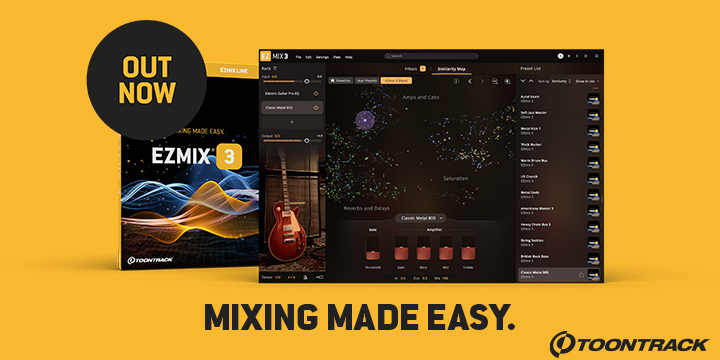As part of the Cubase 4 announcement Steinberg has unveiled the next version of the VST specification - VST3. VST3 marks an important milestone in virtual studio technology and incorporates countless updates, enhancements, changes and new features. Following is a brief overview of the major new features included with VST3.
Improved Performance
Some current plug-ins are known to be heavy on CPU load. Managing large plug-in sets and multiple virtual instruments on typical project studio computer systems can often be difficult because of CPU performance limits. VST3 helps to improve overall performance by applying processing to plug-ins only when audio signals are present on their respective inputs. So instead of always processing input signals, even when there is only silence present, VST3 plug-ins can apply their processing economically and only when it is needed.
Multiple Dynamic I/Os
VST3 plug-ins are no longer limited to a fixed number of inputs and outputs. Their I/O configuration can dynamically adapt to the channel configuration they're inserted in. For example, the new VST3 plug-ins in Cubase 4 can work in stereo-mode when inserted into a stereo channel, but switch to 6 channels when inserted into a 5.1 channel. In any case, each audio channel is processed independently. Interaction between channels depends on the type and design of the plug-in. While it is still eligible to have dedicated surround plug-ins, basically any VST3 plug-in can be surround-capable with true multi-channel processing.
In addition to their flexible audio bussing capabilities, VST3 plug-ins may also offer a dedicated event bus. Typically, this is a MIDI input for control/modulation but these busses are no longer restricted to MIDI standard only. Future plug-ins may replace the common MIDI interface with alternative control methods.
Activating/Deactivating Busses
A typical issue with current virtual instruments is their audio output bussing system and how they're connected to the mixer after loading. Especially virtual samplers with multiple outputs often occupy more mixer channels than need. The VST3 interface offers the possibility to deactivate unused busses after loading and even reactivate those when needed. This cleans up the mixer and further helps to reduce CPU load.
Routing Possibilities
Plug-ins can be connected to the host environment in many different ways: Future VST3 Instruments can have audio inputs. As an example, a synthesizer that offers a built-in vocoder will be able to directly receive an audio signal to control the effect. A VST3 plug-in may have multiple MIDI inputs at the same time.
Parameter Handling – Tree Structure
In general, parameter handling did not change with the integration of VST3. However, there are some improvements to the handling of parameters. Parameters can be organized logically in a tree structure to improve handling of complex plug-ins or instruments with a large number of parameters. It's now a lot easier to locate specific parameters, for example on an automation track.
Resizable Edit Windows
VST instruments become more flexible and complex, which results in bigger editor windows. Some instrument edit windows may fill up more than half of the entire screen. In VST3 editor windows can be resized. As a result, multiple windows can fit on a single screen without overlapping each other.
SDK and Plug-in Test host
A new SDK will be available by the end of 2006 and allow 3rd party developers to produce updates and new plug-ins for the VST3 standard.
In order to facilitate design and testing of VST3 plug-ins, Steinberg has developed a VST3 test host application, which offers audio and MIDI playback to test any VST3 plug-in in a simple host environment. One special feature of this test host is a "unit testing" section. It allows testing of the plug-in's stability and consistency and executes automatic stress tests designed by Steinberg developers.
The VST3 SDK is scheduled for release in the fourth quarter of 2006.
NOTE: Cubase 4 is the first host application to support VST3.



 Other Related News
Other Related News